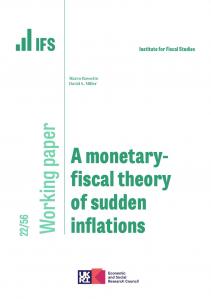In 2010, the Labour government introduced a bill to legislate for rules to constrain the level of government borrowing and the path of debt. At the time, the then Conservative shadow Chancellor George Osborne was scathing of the idea that any government should need to tie its own hands by legislating targets for fiscal prudence:
"We have to debate this vacuous and irrelevant legislation, but why did the Chancellor feel the compelling need to introduce it? Why is he the first Chancellor in history to feel that he needs an Act of Parliament on top of a Budget statement? There can be only two explanations: either he does not trust himself to secure sound public finances, or he knows that the public do not trust him to secure them."
But five years is a long time in politics and one of Mr Osborne’s first acts as Chancellor of the first Conservative government in 18 years was to pass his own Fiscal Charter in July 2015. In presenting this to parliament, he commented:
"We should always fix the roof while the sun is shining. Today I publish the new Fiscal Charter that commits our country to that path of budget responsibility. … It is sensible, pragmatic and it keeps Britain secure."
In this chapter, we describe the three rules that – in theory, at least – will now constrain Mr Osborne’s fiscal plans. These are: the fiscal mandate, which governs the level of public borrowing; the supplementary debt rule, which governs the path of public debt over the next few years; and the welfare cap, which is designed to limit the level of spending on most spending on social security benefits and tax credits over the next five years. The supplementary debt rule and the welfare cap were both introduced in the last parliament and were discussed in the IFS Green Budgets of 2013 and 2015, respectively. We therefore devote most attention in this chapter to the newly-implemented fiscal mandate.
The fiscal mandate requires that in ‘normal times’ the government should always run a budget surplus. Section 3.2 discusses possible motivations for such a rule and also outlines why, in principle, a government might want to run looser fiscal policy. Section
3.3 then examines the details of the fiscal mandate more closely and considers whether it provides the flexibility to deal with the circumstances described in Section 3.2. Section 3.4 discusses the supplementary debt rule and the welfare cap. Section 3.5 concludes.
This chapter was presented at the Green Budget launch on 8 February 2016. All presentations are available to view on our Youtube Green Budget 2016 playlist.









